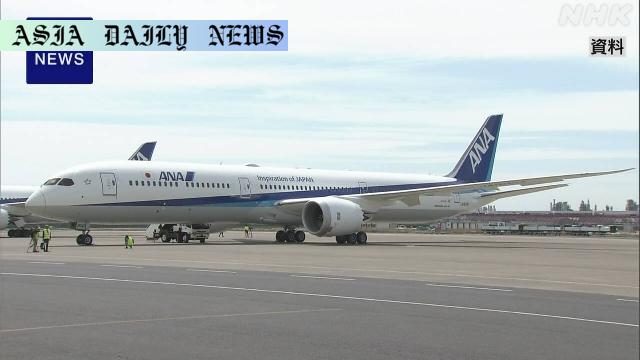Collision – The wing of an ANA aircraft clipped a Breeze Airways plane’s tail at Charleston International Airport, leading to an investigation.
- Key Point 1: The ANA plane’s wing clipped the tail of a parked Breeze Airways aircraft at Charleston Airport on July 18.
- Key Point 2: No injuries were reported for crew members aboard the ANA plane; investigations are ongoing to determine casualties on Breeze Airways.
- Key Point 3: The NTSB and Japan Transport Safety Board are collaboratively investigating the incident.
- Key Point 4: The ANA aircraft was a new Boeing model intended for Tokyo via Los Angeles and Honolulu.
- Key Point 5: ANA apologized and pledged full cooperation in the investigation.

Collision Incident at Charleston International Airport: An Overview
The aviation sector prides itself on strict safety protocols, yet occasional incidents remind us of their unpredictable nature. On July 18, at Charleston International Airport in South Carolina, a newly-manufactured aircraft owned by All Nippon Airways (ANA) found itself in an unfortunate situation. As the plane taxied towards takeoff, its left wingtip collided with the tail of a parked Breeze Airways aircraft. The event, though non-fatal, highlighted critical safety gaps and raised questions about operational protocols.
The involved ANA plane, built at a Boeing facility adjoining the airport, was set for a journey to Tokyo’s Haneda Airport, with stops in Los Angeles and Honolulu. Onboard the ANA aircraft were two pilots and three crew members responsible for aerial transit – none sustained injuries. Breeze Airways’ aircraft, parked at the apron, incurred damages on its tail section. Authorities are still confirming details regarding passenger injuries, but thorough evaluations are being undertaken on both flights.
Investigations Underway by International and Domestic Authorities
Following the collision, the U.S. National Transportation Safety Board (NTSB) initiated an investigation to uncover the root cause. Their Japanese counterpart, the Japan Transport Safety Board, will assist in the probe, reflecting a cooperative approach to aviation safety. Both agencies aim to examine technical, procedural, and environmental factors that contributed to the accident. Early reports suggest that human error, possible miscommunication between ground control and crew, or mechanical oversight could be contributing factors.
ANA has issued a formal apology, stating its dedication to cooperating fully with respective authorities. It also pledged to strengthen precautionary measures to prevent future occurrences. Such corrective actions are essential given that Charleston Airport is a critical operational node, especially with Boeing’s factory and global aviation supply interplay centered there.
The Implications for Aviation Safety Standards
This incident underlines the importance of adhering to international aviation guidelines. Despite steady advances in aviation safety, minor lapses can lead to potential threats. Incidents like this remind corporations and regulators alike of the need for rigorous internal reviews. Furthermore, it highlights the vital role of advanced pilot simulations alongside real-time ground handling practice. The aviation industry must collaborate on enhancing systemic improvements in high-traffic airport environments, especially where manufacturing facilities and public terminals intersect.
Public trust is paramount for carriers such as ANA, a globally reputed Japanese airline. As investigations unfold, stakeholders, including ANA, Boeing, and regulatory bodies, will likely revisit their safety frameworks. Their response will not just determine the resolution of this incident but will also contribute towards larger, global safety improvements in the sector.



Commentary
A Critical Lesson for the Aviation Industry
The recent collision between the ANA and Breeze Airways planes serves as a stark reminder of the complexity and fragility of aviation operations. While no fatalities or critical injuries have been reported, the incident accentuates the vital requirement for enhanced operational vigilance. Both the manufacturing and operational sectors must reflect on potential systemic failures. Could this incident have been avoided through more advanced ground communication systems, or was it a consequence of procedural oversight? Such questions demand introspection from airlines and aviation authorities worldwide.
The Airport and Its Dual Operational Challenges
Charleston International Airport, as both a public aviation hub and home to a Boeing manufacturing facility, is an exceptional case. The unique co-location of production and commercial airport operations creates logistical complexities. This incident underscores the need for tailored, location-specific ground control systems that minimize the chances of such collisions. Furthermore, the importance of designing ground spaces to facilitate seamless movement of both in-service and newly-manufactured aircraft becomes glaringly evident.
Global Cooperation in Aviation Safety
It is commendable that both the NTSB and Japan Transport Safety Board are collaborating on the investigation. This reflects a shared commitment to enhancing global aviation safety. Yet, it also highlights a dire requirement for comprehensive cross-border incident-management protocols. As air travel and aircraft manufacturing become more interconnected, collaborative safety efforts should be prioritized by major aviation stakeholders. The Sino-American and trans-Pacific air routes have grown exponentially in recent years; preventing further operational dangers should be at the forefront.